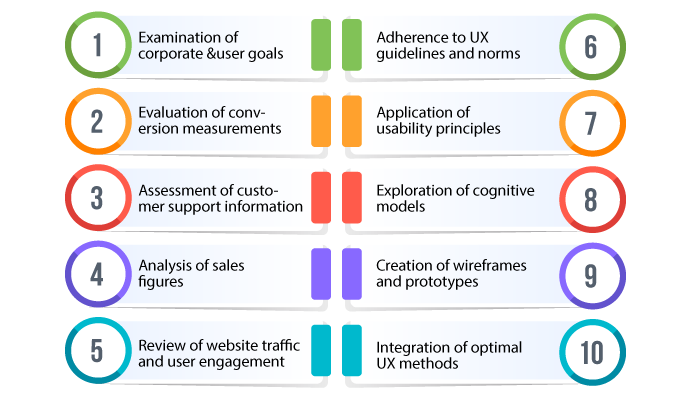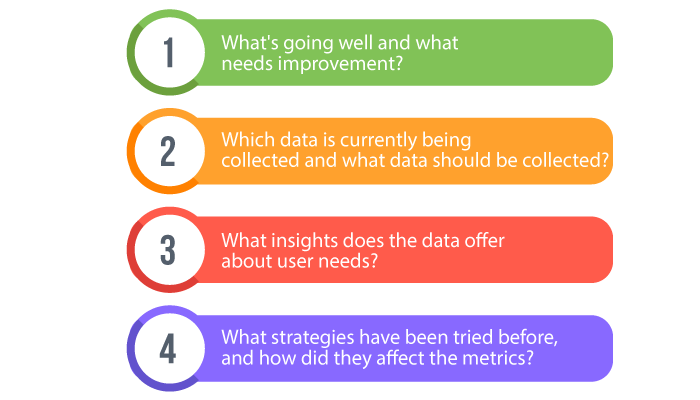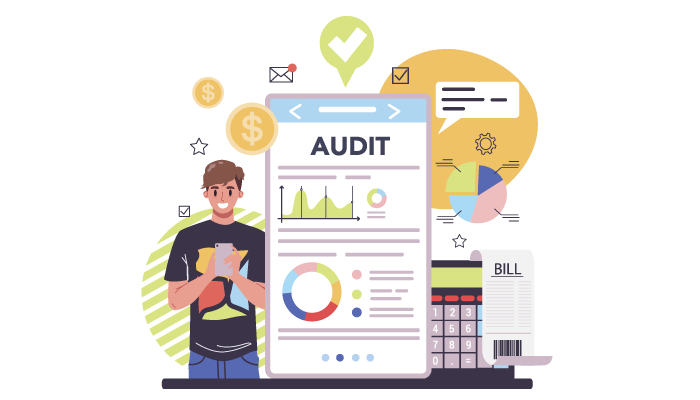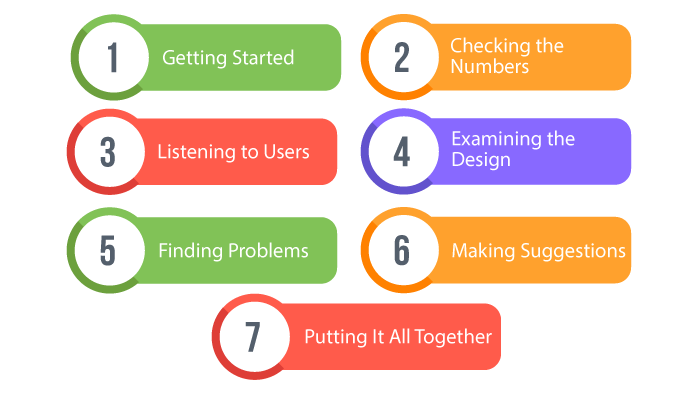Table of Contents
When it comes to shaping digital interactions UX audit services play a pivotal role. In 2023, user expectations are higher than ever, demanding seamless intuitive, and enjoyable experiences. A good UX design will make it easy for users to find what they are looking for, understand how to use the website or app, and enjoy their experience.
However, a UX audit is a process of evaluating a website or app to identify usability issues and areas for improvement. It can be conducted by a team of experts or by a single individual with experience in UX design.
This is where the expertise of UX audit services comes into play, offering a comprehensive evaluation of your digital platforms to ensure they meet and exceed user needs.
If you are looking to improve the User experience of your website or app, then a UX audit is a great place to start. By identifying and addressing usability issues, you can create a website or app that is more users friendly and enjoyable for your visitors.
With this being said let’s dive into the blog.
What is UX Audit Service?

Before we dive into UX audit service, let’s talk about what is UX audit.
A UX audit is a systematic evaluation of a digital product’s usability and user experience. Picture this, you owned an e-commerce website, and a user is going to purchase something and started on checkout process. But do not convert.
That is when you need to do UX audit- So that you get to know which part of the app is causing headaches.
Therefore, a UX audit service is a process in which a team of experts evaluates and accesses the user experience of a digital product, such as a website or mobile application.
The main goal of a UX audit is to identify usability issues, design flaws, and other factors that may be negatively impacting the overall user experience.
During a UX audit, experienced professionals with a background in UX design, interaction design, usability, and human-computer interaction will review the product’s design, functionality, and overall user flow.
Hence, an auditor will measure, test and analyze the following during a UX audit:
- Outdated content
- Broken Links
- Design Harmony
- Layout Consistency
- Customer Journey roadblocks
- User-Friendly and Accessible
- Usability Rules
- Branding Alignment
- Align with Goals
- Metrics Analysis
- Legal Adherence
What occurs during a UX audit Service?

To start let’s address the key inquiries. What transpires in the course of a UX audit and how does it dovetail with usability testing?
Within a UX audit, an auditor employs diverse techniques, tools and metrics to find the areas where a product may encounter challenges:
- Examination of corporate &user goals
- Evaluation of conversion measurements
- Assessment of customer support information
- Analysis of sales figures
- Review of website traffic and user engagement
- Adherence to UX guidelines and norms
- Application of usability principles
- Exploration of cognitive models
- Creation of wireframes and prototypes
- Integration of optimal UX methods
When it comes to differentiating between usability testing and a UX audit hinges on the flow of information. On the other hand, a UX audit derives issues from a foundation of pre-established standards or goals, while usability testing pinpoints problems through user interactions.
However, it’s worth noting that within an audit, if access to fundamental metrics is lacking, an auditor might integrate usability testing. This amalgamation of findings, along with longitudinally gathered data, is subsequently assessed against both industry standards and product objectives, all within the context of UX design frameworks.
What can a UX audit service tell you about a digital product, and what are its limitations?

It’s important to note that a UX audit isn’t a magical solution for all the user experience issues on a website or app. It won’t work well if the suggestions it provides aren’t practical or aren’t implemented. Also, it demands a significant amount of time and effort, which can delay other tasks when handled by the internal team.
However, even though a UX audit can’t fix every problem with a struggling site or app, it can help answer some important questions:
- What’s going well and what needs improvement?
- Which data is currently being collected and what data should be collected?
- What insights does the data offer about user needs?
- What strategies have been tried before, and how did they affect the metrics?
A well-executed UX audit offers several advantages for a product. It suggests actionable steps based on real evidence, not just guesses. It supports the creation of strategic design plans. It generates useful metrics for future adjustments.
Moreover, it assists in forming ideas about why users behave in certain ways and how they might act in the future. Importantly, it plays a significant role in enhancing conversions and return on investment (ROI) once the suggested actions are put into practice.
When looking for the best UX/UI design agency, consider their expertise in conducting effective UX audits and translating insights into practical improvements that enhance user experiences and business outcomes.
Who conducts a UX audit service and when is it conducted?

Tim Broadwater, who wrote for LibUX, offers a helpful guideline about when a UX audit is a good idea: “(an audit) should be done right at the beginning stages of a website, web application, dedicated app, or similar redesign project.
The word ‘redesign’ is important here; audits are typically done on products or services that have been live for a while and have accumulated data to study.
When it comes to testing new features and products, usability testing is usually preferred over a comprehensive audit.
As a general rule, companies without a dedicated UX team can gain the most from a UX audit. On the other hand, those with an in-house team are usually continuously evaluating the product and refining the experience.
If your budget permits, it’s recommended to have external experts conduct the audit.
Internal teams often find it hard to distance themselves from the product, and unconscious biases can affect the process.
According to Nate Sonnenberg, the cost of bringing in auditors can vary – starting at around $1000 for a couple of days with a one-person team and potentially reaching up to $10,000 for a comprehensive audit by a UX team over four weeks. However, Nate suggests that within 2-3 weeks, you can identify about 80% of the issues, which is a good starting point.
But even if your budget doesn’t allow for an external audit, there’s still hope. You can conduct an internal product audit by following an unbiased process, utilizing the many available tools, and becoming familiar with UX best practices and standards if you’re not already.
Process of UX Audit Service

We have already discussed the UX audit process that helps make sure websites and apps work well for people who use them. It’s like giving them a check-up to see if they’re doing okay or if there are things that need fixing.
With this being said, let’s look at the process of UX audit services:
Getting Started
First of all, you need to gather information about the product. This includes understanding what the product is meant to do and what goals it has. This step is like preparing all the tools you need before you start fixing something.
Checking the Numbers
Next, you look at the numbers.
With this step, you can check how many people visit the product, how long they stay, and if they do what the product wants them to do. It’s like checking how many visitors a park gets and what they like to do there.
Listening to Users
Now, it’s time to listen to the users.
Make sure to pay attention to what people say about the product. It’s like asking park visitors if they’re having a good time and what they would change.
Examining the Design
After that, look at how the product is designed.
Don’t forget to check if the colors, buttons, and pictures all make sense and work nicely together. It’s like making sure all the rides in a theme park are fun and fit the theme.
Finding Problems
During this step, find things that aren’t working well. It’s like discovering broken swings in the park or signs that are hard to read.
Making Suggestions
Now after finding problems, think of ways to make things better. It’s like suggesting adding more benches in the park or making signs bigger and clearer.
Putting It All Together
Finally in this step, write down everything you’ve found and the suggestions you’ve made. It’s like creating a report about the park, listing what’s great and what could be improved.
So, a UX audit is like giving a product a thorough check-up. By looking at numbers, listening to users, and examining the design, you can find problems and suggest ways to make things better. It’s all about making sure the product is enjoyable and easy to use, just like making sure a park is a fun place for everyone.
Value of UI/UX audit services
If you’re considering UI/UX audit services, you’re tapping into a valuable resource for enhancing your digital product’s success.
With these audits provide a thorough examination of your user interface and experience, pinpointing areas for improvement and delivering actionable insights. Imagine you’re on a journey to develop a digital product. Just like taking your car for a regular check-up to ensure it’s running smoothly, a UI/UX audit ensures your product operates seamlessly for users.
For example, let’s say you run an e-commerce website. A UI/UX audit can help identify where customers might be getting stuck during the checkout process, leading to cart abandonment. By pinpointing this issue, the audit guides you on refining the interface, making the journey smoother for users and increasing the chances of completed purchases.
In development companies, the journey of UI/UX design involves constant evolution. After all, user expectations and technology are always changing. By leveraging UI/UX audit services, you’re investing in a process that aligns your product with these changes, ultimately boosting user satisfaction, engagement, and even conversions. So, if you’re seeking a way to make your digital product stand out and perform at its best, UI/UX audit services are a strategic choice on your development journey.
Are you looking for UX audit services?
If you are looking for help with UX audit services, We AppIt can help you. With experience in conducting UX audits on a variety of digital products, including websites, apps, and software.
We can help you to identify usability issues and to make recommendations for improving the user experience. If you planning to do so feel free to contact us.
FAQ
A UX audit service involves a comprehensive evaluation of your website or app’s user experience. It identifies usability issues, design inconsistencies, and other factors that may impact user satisfaction and engagement.
A UX audit helps you uncover hidden problems, enhance user satisfaction, and optimize your product’s performance. It ensures your digital platform aligns with user needs and business goals.
During a UX audit, experts analyze your product’s design, functionality, and user journey. They assess factors like usability, accessibility, design consistency, and more to provide actionable recommendations for improvement.
A UX audit is beneficial at various stages – during the initial development, after significant updates, or when you notice declining user engagement. It’s especially helpful if you’re experiencing usability issues or want to enhance the user experience.
A UX audit identifies bottlenecks in the user journey and suggests improvements, which can lead to smoother interactions and higher conversion rates.
Costs can vary based on the depth of the audit and the size of your project. Smaller audits might start around a few hundred dollars, while more comprehensive ones can range into a few thousand dollars.
The duration depends on the complexity of your project and the extent of issues found. Smaller audits might take a few days, while more in-depth ones can span a few weeks.
While internal teams can perform audits, external experts offer a fresh perspective and often spot issues that internal teams might overlook due to familiarity.






No Comments
Comments are closed.